Levels: a Critical Key to Understanding Cosmology
in Hieronymus Bosch's paintings
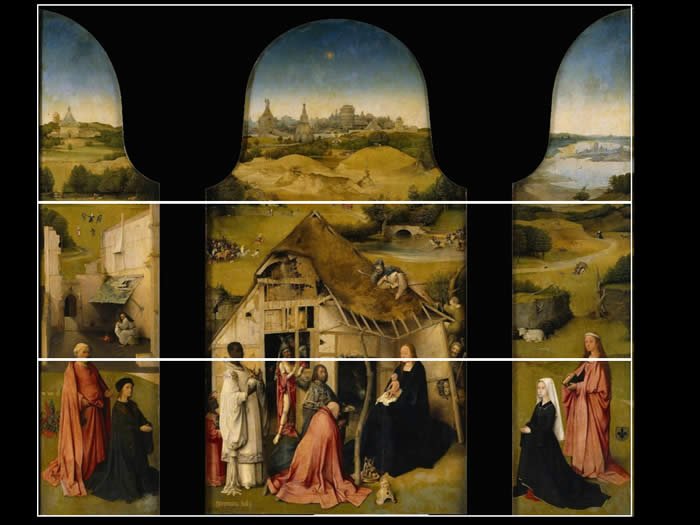
The device of levels was used by Bosch in multiple works; it often conveyed ideas to great effect, and when the device was used intentionally in the composition, it always provided information regarding the same set of influences: higher influence, area of transformation or interaction, and lower influence.
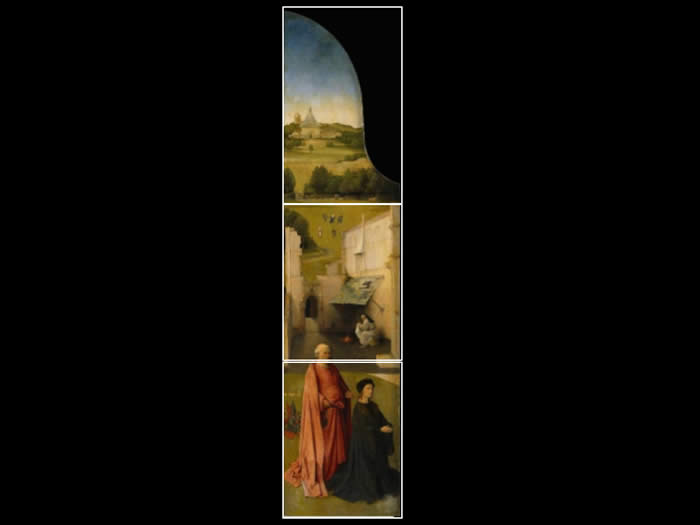
In The Adoration of the Magi, the three areas are well defined and convey specific messages about influence. In the left-hand panel, for example, the upper portion shows the church, which represents the Kingdom of Heaven on earth—a divine religious influence.
The church is, of course, an idealized vision of what heaven consists of; and it is self-referential, that is, it is knowingly imagined — we imagine that heaven is like what the church represents to us, but in reality, we know that it cannot be, this is just the best we can do. so in a certain way, this image is an image of the transcendent nature of God.
The foreground of this section is separated from the far background by a gate, indicating a division between man and God. Trees, representing God's thoughts and influence (as they did in the Garden of earthly delights) are dense near the gate and towards the back of the painting.
A small path winds around the trees in the foreground, indicating that there is a way towards God's Grace left.
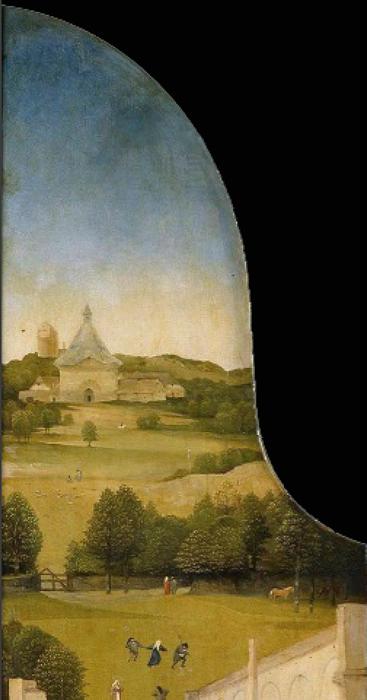
The middle ground represents an area of transition. Here, the church has been destroyed; Bosch employes his emblem representing corrupted purity, the dads of the toad, over the door of the church. A penitent beggar, poverty-stricken, warms himself by the ashes of a fire; the last clone of heat left from the true ideas of God. He is sitting on an upside down basket, which probably represents the need for an inner emptiness; over his head, he has constructed a rude shelter, representing a group of ideas he believes may give him spiritual sustenance or protection, but even these have holes in them. It is a huge step down from the magnificence and glory of the church; the area of transition here implies the need for an inner poverty.
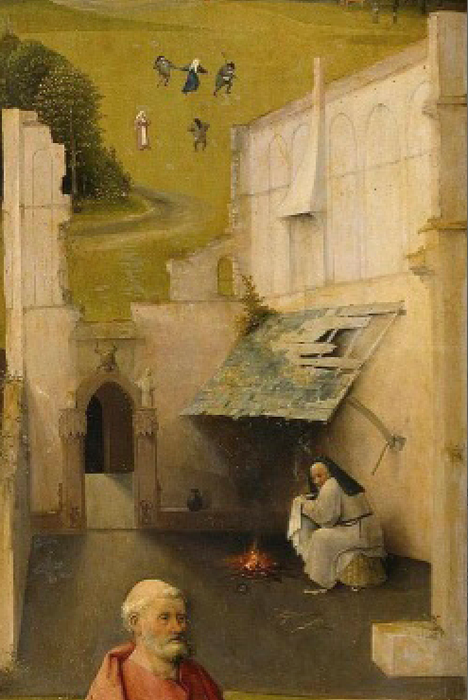
In the foreground, St. Peter and the male patron appear in the only guise a man can have left when confronted with the mystery of divinity: supplication. Peter is dressed in robes of pink, tinged with red, Bosch's signature color combination for the intersection of the divine (pink) with the earthly (red.)

It should be noted that the symbolism used in this painting is remarkably consistent with Bosch's symbolic library and other works, using the same images to convey the same meanings. Because his library of symbols was carefully developed an internally consistent, paintings that do not adhere to his symbolic lexicon should be suspect at once; pieces that do not share the same language would have to either represent very early pieces, or imitations by those who did not understand the content of his painting.
More commentary on this painting will be made available in a full esoteric commentary at a future date.
Some slides from The Haywain commentary illustrate its identical structure showing levels.
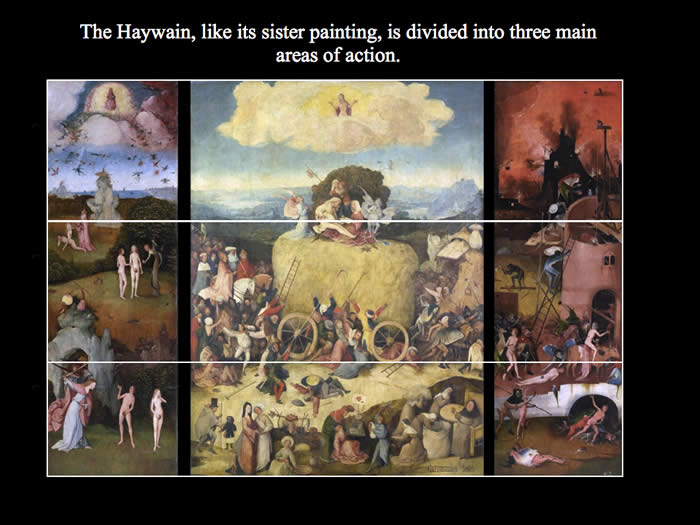

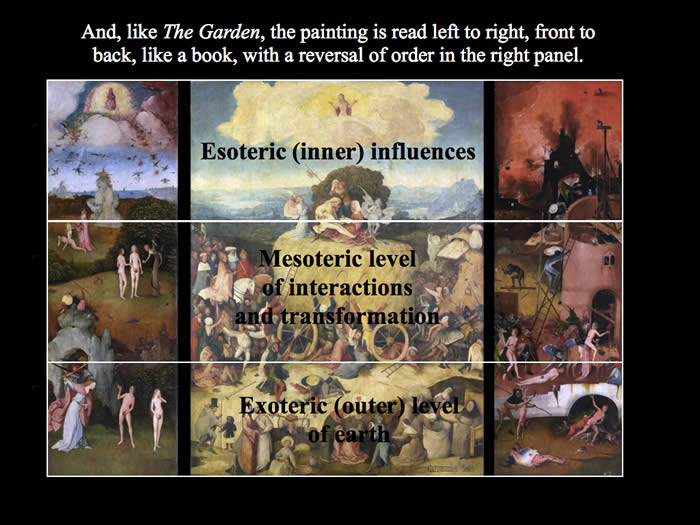
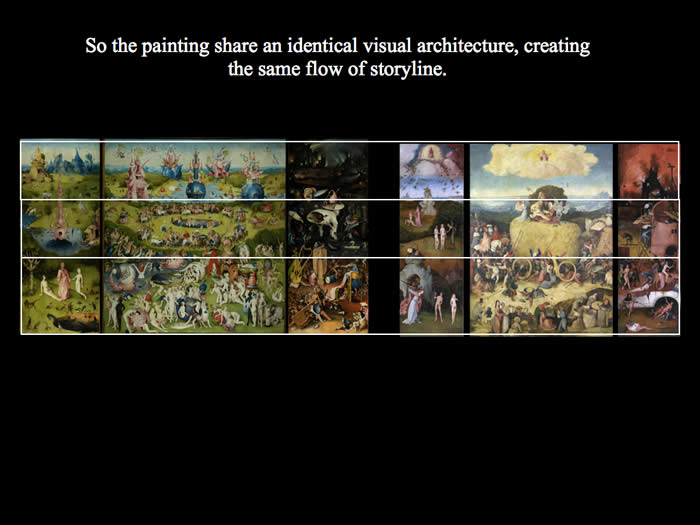
A Doremishock resource
Contact
All material copyright 2013 by Lee van Laer. This work may not be reproduced without permission.